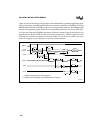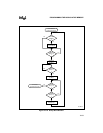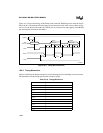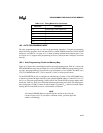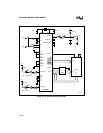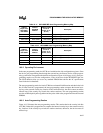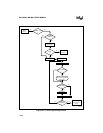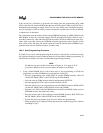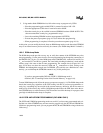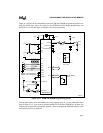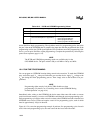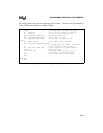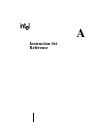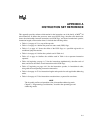
8XC196MC, MD, MH USER’S MANUAL
16-30
2. Using another blank EPROM device, follow these steps to program only CCB0.
— Place the programming pulse width (PPW) in external locations 14H–15H.
— Place the appropriate CCB0 value in external location 4018H.
— Place the security key to be verified in external EPROM locations 0020H–002FH. This
value must match the security key programmed in step 1.
— Leave the remaining EPROM locations unprogrammed (0FFFFH).
— Execute the power-up sequence (page 16-14) to initiate auto programming.
— When programming is complete, follow the powerdown sequence (page 16-14).
At this point, you can modify the circuit, then use ROM-dump mode to write the entire OTPROM
array to an external memory device and verify its contents. (See “ROM-dump Mode” for details.)
16.9.5 ROM-dump Mode
The ROM-dump mode provides an easy way to verify the contents of the OTPROM array after
auto programming. Use the same circuit as for auto programming, but change the connections of
the PMODE (P0.7:4) pins. To select ROM-dump mode (PMODE=6H), connect P0.6 and P0.5 to
V
CC
and connect P0.7 and P0.4 to ground. The same bank switching mechanism is used and the
memory map is the same as that for auto programming. The example circuit (Figure 16-12 on
page 16-26) does not show the necessary WR# and V
PP
connections to allow writing to the
EPROM. And although the example uses an EPROM, you could also use a RAM device. Alter-
natively, you could dump the OTPROM contents to any 16-bit parallel port.
NOTE
If you have programmed the DED bit (USFR.2), ROM-dump mode is
disabled. (See “Controlling Fetches from External Memory” on page 16-6).
To enter ROM-dump mode, follow the power-up sequence on page 16-14. The ROM-dump mode
checks the security key, regardless of the CCR security-lock bits. If you have programmed a se-
curity key, a matching key must reside in the external memory; otherwise, the device enters an
endless loop. If the security key verifies, ROM-dump mode fetches the PPW, then writes the en-
tire OTPROM array to external memory. PACT# remains low while the dump is in progress, then
goes high to indicate that the dump is complete.
16.10 PCCB AND UPROM PROGRAMMING (8XC196MH ONLY)
The PCCB and UPROM programming modes are useful if you have auto programmed and veri-
fied the rest of the OTPROM array and now need to program only the PCCB and UPROM bits.
(With slave programming mode, you can program the PCCB and UPROM bits along with the rest
of the array.)



